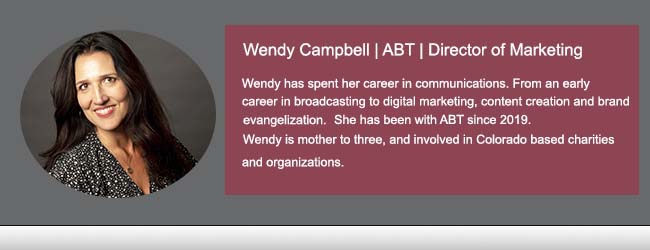What is the Entrepreneurial Operating System?
The Entrepreneurial Operating System (EOS) is a comprehensive business management system and set of tools designed to help small and medium-sized businesses (SMBs) operate more effectively and efficiently. It was developed by Gino Wickman and outlined in his book “Traction: Get a Grip on Your Business.”
EOS is built on the premise that many businesses issues stem from a lack of clarity, communication, and accountability within an organization. If this sounds like your business, then definitely keep reading. EOS provides a holistic framework that addresses these issues and focuses on helping businesses achieve their long-term goals.
Key components of the EOS include:
- Vision: EOS helps businesses clarify their long-term vision by creating a clear and compelling vision statement and defining the core values that guide the organization. This is an important step. Understanding not only where your business currently is, but where you are driving to is crucial to road mapping your direction. You wouldn’t drive to a new place without some sort of consensus of where you are headed. The vision is key.
- Traction: This involves implementing a series of tools and disciplines to help companies execute their vision, such as setting clear quarterly goals and priorities and holding teams accountable for achieving them. These are important too. Choosing the priorities of each department that drive to the global vision will help your team members understand which activities carry weight. It’s the difference between being “busy” and being effective.
- People: EOS helps businesses define the right structure, roles, and responsibilities within the organization and ensures that the right people are in the right seats, leveraging their strengths. This doesn’t necessarily mean that people within the organization are in danger of losing their jobs. Finding good employees in this climate isn’t easy. However, you can sometimes find that individuals you’ve hired for Role A, have a better disposition for Role B. SHIFT THEM. They’ll be happier and your team will be more effective overall.
- Data: Utilizing key performance indicators (KPIs) and scorecards to track and improve the performance of the organization. Why? Because data rarely lies. The best data is long term data so that your team can review trends over time. Short term data just doesn’t have as much value. It doesn’t make sense for your business to gauge progress year over year, when the year before was COVID. Make sense? If you aren’t actively keeping clean data, start today. Figure out what you want to measure, how you’re going to measure it, and consistently do that going forward.
- Issues: Identifying and solving problems by creating a culture of problem-solving and issue resolution. Issues used to stress me out in meetings. They weren’t focused, sometimes they weren’t relevant. They felt like a waste of time. The issues we’re talking about in the EOS are issues that have come up during the meeting (or realized earlier and brought to the meeting) that are causing the team challenges in meeting the previously defined goals. The hope is that your management team is staying focused and managing to the focus instead of the noise.
- Processes: Streamlining and documenting core processes to improve efficiency and consistency in operations. Don’t skip this step. Routine is core to human growth, hence core to business growth too. When processes are documented, everyone knows what should be done and how those processes should be done. Also, it takes the brainwork out of trying to reinvent the wheel each time something needs to be done. A process simplifies the time investment too, which means your team will become more efficient which equates to more dollars.
EOS typically involves implementing weekly leadership team meetings and quarterly planning sessions to keep the organization on track and ensure that it is making progress towards its goals. The weekly meetings are fine in house, but for broader planning and concentration take your quarter and annual meetings offsite.

It’s important to note that EOS is not a one-size-fits-all solution, and its implementation may vary depending on the specific needs and circumstances of a business. Many companies engage EOS implementers or consultants to guide them through the process and tailor it to their unique requirements.
Overall, the Entrepreneurial Operating System is designed to help businesses gain traction, improve organizational health, and ultimately achieve their long-term vision and goals.
So, What Types of Organizations Typically Adopt the EOS?
So, what types of organizations typically adopt EOS? We do, and we believe in its value but, let’s explore a few others:
1. Small and Medium-Sized Businesses (SMBs): EOS is most commonly associated with small and medium-sized businesses. These organizations often struggle with issues related to clarity, communication, and accountability. EOS provides a framework to address these challenges and streamline operations.
2. Family-Owned Businesses: Family businesses are known for their unique dynamics and complexities. EOS can be a game-changer for such organizations, offering a structured approach to align family members and non-family employees toward a common vision while promoting effective communication and accountability.
3. Fast-Growing Startups: Startups often experience rapid growth, and managing this growth can be challenging. EOS offers a systematic way to scale operations and keep teams aligned with the company’s vision, even in a high-growth environment.
4. Companies in Need of Organizational Clarity: If your organization struggles with vague goals, undefined roles and responsibilities, and poor communication, EOS can bring clarity. EOS helps create a unified vision, clearly defined roles, and a focus on the most critical priorities.
5. Companies with Cultural Challenges: Businesses facing cultural issues, such as a lack of accountability, inconsistent processes, or a toxic work environment, can benefit from EOS. It helps instill a culture of openness, accountability, and continuous improvement.
6. Organizations with Inefficient Processes: For organizations dealing with inefficiencies and bottlenecks, EOS provides a structured framework for identifying, documenting, and improving key processes, thus increasing operational efficiency.
7. Leadership Teams Seeking Alignment: If your leadership team is not on the same page or struggling with alignment issues, EOS can help unify your team’s efforts and make sure everyone is working toward a common vision.
8. Companies Looking for Sustainable Growth: EOS is not just about quick fixes but long-term sustainability. Organizations that adopt EOS are often those looking for steady and sustainable growth, not just short-term gains.
9. Businesses Wanting to Focus on Strategy: EOS helps organizations shift their focus from day-to-day firefighting to long-term strategy. It encourages setting clear goals and priorities to work on the business, not just in the business.
10. Organizations Willing to Invest in Change: EOS requires a commitment to change and a willingness to invest time and resources. Organizations that understand the value of structured systems and are ready to invest in their growth often find EOS to be a great fit.

Remember that EOS is not a one-size-fits-all solution, and its success depends on how well it’s implemented and adapted to your specific organizational needs. Many businesses find it beneficial to work with EOS implementers or consultants to guide them through the process.
The Entrepreneurial Operating System is a versatile and effective management system suitable for various types of organizations. If you recognize your organization’s challenges among those mentioned above and you’re eager to embrace a structured approach to growth and improvement, EOS could be the ideal solution for you. It’s about achieving clarity, alignment, and accountability in your organization, ultimately guiding you toward your long-term vision and goals.

